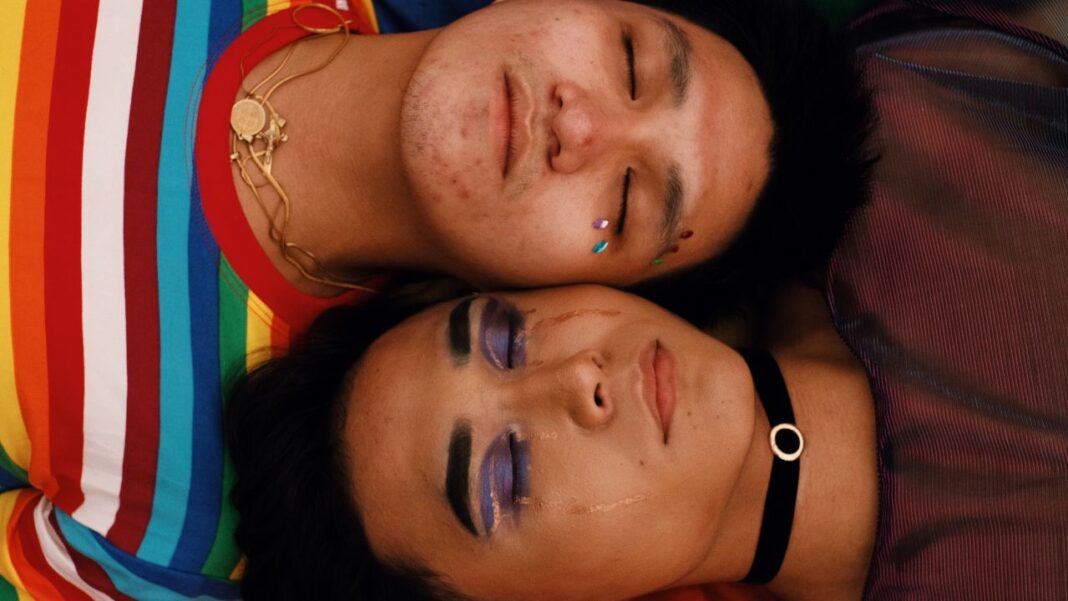-Abhinav Pandey (B.A.LL.B 1ST Year) University of Lucknow
Abstract
This Paper mainly Focused on the LGBTQ community aspect governing the general public consciousness identity development that what they perceived about the LGBTQ community. The basic research lies in contextual identity development and the problems faced by the LGBTQ community. The complementary part of the study is that the higher levels of education the LGBTQ community have and over time, they will consider normal people, as now a day very abnormal is the new normal. The paper gives an instance purview of what is this and how it is carried out and what are the challenges they are facing at all. The need confidently has been made or tried to make due to the illegality of the Indian constitution.
Keywords: LGBTQ community, Section 377, Issues faced by LGBTQ Community, LGBTQ Rights.
The Problem and Scope
“Race, gender, religion, sexuality, we are all people and that’s it. We’re all people. We’re all equal.” Whatever your gender, race, religion, and sexuality is, you’re still the person you are now. Your sexual preference doesn’t define you, it is your personality that aspire you to be who you are in the society where you belong. But there are still people who do not yet accept the third sex in the community. Attitude is determined as “a predisposition or a tendency to respond positively or negatively to a certain idea, object, person, or situation”. A person has two angles in viewing a certain person or peers that are involved in a society, it’s either positive or negative. On the other hand, an attitude is “a relatively enduring organization of beliefs, feelings, and behavioural tendencies towards socially significant objects, groups, events or symbols”. We all know that we live in a society with a group of different people that has different perceptions. Like, the negative stereotypical thoughts that arise from proximity and social knowledge of our groups; and in the case of heterosexual-homosexual dynamics, they may also serve as a safety mechanism used to enforce group superiority and normalcy. That means that society still exhibits ambivalence toward the inclusive acceptance of homosexuality today. The widespread LGBTQ community has awakened the social perspectives of society towards them. This study could not only benefits to the researchers but also the whole community. It may change their views, perceptions, and beliefs in the LGBTQ community. Nowadays researchers have seen a lot of changes in the LGBTQ community. On how they interact and build their self in society just for them to be accepted. The purpose of the study is to know how heterosexual people see homosexual as their friends and how they interact with them and also to acknowledge society about how homosexuality approach heterosexuality in the 21st century. This present study was intended to achieve the views and perceptions of heterosexuality toward the lesbian, gay, bisexual, and transgender in society. The study beset 3 main objectives: To explore current views and perceptions of heterosexuality towards homosexuality. To discover how people deal with and how they interact with homosexuality. To examine their basis on how they come up with such an attitude towards homosexuality.
Significance of the Study:
People in the 21st century has already aware of the LGBTQ community and through this, the researchers would like to know the recent attitudes of heterosexuality towards the LGBTQ. This will lead to acknowledging the people in the community according to the LGBTQ people and it will also help to change their views if in case they had been disgusted or angry towards their gender preference. This study will not only benefit the authors but eventually, it will help to toil people in their perceptions and attitudes.
Definition of terms:
The following terms defined the words used in the present study:
Positive attitude: The Persons, who will be possessing positive behaviour, will explore good things in others and will not go after negativity.
Negative attitude: Such types of persons are always prone to extreme degrees of anger and carry sentiments of hatred for others.
Neutral attitude: Such type of person remains self-satisfied and complacent. Their attitude is composed of indifference and detachment.
Men and women have various attitudes towards the LGBT community. Men’s attitudes toward homosexuals tend to be more negative than those of women. Attitudes towards homosexual people, the sociodemographic correlates of these attitudes, and the potential gender differences, which means attitudes depend upon how people dealt with LGBT, have a distinctive correlation between the two. In some findings, women held more favourable attitudes than men and men held more favourable attitudes toward female than male homosexuality, whereas women did not differentiate. If heterosexual people with more interpersonal contact, their attitudes will be more favourable to the extent that they will evolve more close relationships and receive direct disclosure about another’s homosexuality. On the other hand, a study about homosexuality continues to say that homosexual relations should be neither acceptable nor legal. Prior knowledge to of the study, there have been changes in attitudes as time goes by. Some people have already accepted the third sex community but some are still on the personal discomfort with lesbians/gay men, institutional homophobia towards lesbian/gay men and the deviance/changeability factors were separate, they were highly correlated and showed little evidence of divergent validity. With the help of said theory, men and women did not differ in their overall level of homophobia. Both were associated with having an LGBT acquaintance and friends. Such an act may be occurring if a person is really against the third sex community. This may result to stress for homosexual people. These stressors may include homophobic prejudice, social rejection, discrimination, and harassment. Being confronted with these stressors, in turn, is linked with negative mental health outcomes, including depression, drug use, and suicide attempts. Since well-being among gay and lesbian people is a significant public health concern, in recent decades, many scholars in Western countries have addressed attitudes related to same-sex attraction and behaviour, and policymakers have aimed to reduce discrimination and contribute to a generally positive social atmosphere. Nonetheless, the attitudes toward heterosexuals may vary among the people within the society
LGBTQ Community rights in India
LGBT rights in India have been evolving rapidly in recent years. The country has repealed its colonial-era laws that directly discriminated against homosexual and transgender identities and also interpreted Article 15 of the Constitution to prohibit discrimination on the basis of sexual orientation and gender identity. Transgender people in India are allowed to change their legal post-sex reassignment surgery under legislation passed in 2019 and have a constitutional right to register themselves under a third gender. Additionally, some states protect the third-gender population in Asia through housing programmes and offer welfare benefits, pensions, and free operation in a government hospitals.
LANDMARK JUDGEMENTS
Naz Judgement
It is popularly known as Naz Foundation Judgement a 2009 Judgement by the Delhi High Court. In this Judgement for the first time, the Honourable Delhi High Court declared Section 377 to be unconstitutional. Naz and NGO based in Delhi filed a PIL at the Delhi High Court and claimed Section 377 of the IPC to be unconstitutional. They have been at the forefront of the battle against discrimination. In 2009 they successfully got the courts to declare Section 377 to be unconstitutional which violates Article.14,15,16 of the Constitution of India.
Navtej Singh Johar Vs. Union of India
In 2018, in the landmark decision of Navtej Singh Johar Vs. Union of India, the Supreme Court of India decriminalised consensual homosexual intercourse by reading down Section 377 of the IPC and excluding consensual homosexual sex between adults from its ambit.
NALSA Vs. Union of India
For the first time in history, Transgender people were recognised as citizens of this country, all the fundamental rights were extended to them and they were given the identity of the third gender. This case continues to be the landmark case for transgender rights in this country, the court laid a comprehensive set of guidelines that every state must follow to bring transgender into public spheres and provide remedies for their marginalisations.
CONCLUSION
This review is an attempt to enable researchers to think about the ways in which LGBTQ identities impact the methodological decisions taken in a research project. As stated in the introduction, LGBTQ people will already participate in much, if not all, social care research – the challenge for the researcher is to allow these voices expression. It is recognised, of course, that giving each and every discrete factor outlined in this review full consideration would, perhaps, mean that the research became infeasible. Account, therefore, needs to be taken of the issues outlined earlier. The challenges associated with both counting and sampling LGBTQ populations, the problematic issues of definition and categorisation, the language used to describe LGBTQ people and the ethical concerns that should be addressed with this, or any, vulnerable population may be overcome by a willingness to include the perspectives of LGBTQ people. These issues and the research questions being asked will be the impetus behind the choice of methods in any given research project. As noted earlier, whilst qualitative methods have traditionally been the choice for research that explores hidden or particularly vulnerable populations, for LGBTQ research, mixed methods have proved a useful way of, first, providing a broad understanding of particular issues and, second, more in-depth analysis of participants’ experiences. Similarly, participative methods, whilst presenting numerous methodological challenges, allow for a degree of ownership of research that has historically been used only to oppress. These methods are one way to address the fears LGBTQ people may have regarding the collection of data and the use of findings in social care research. To conclude, social care research with and including LGBTQ people should have as one of its primary aims the facilitation of the often-silenced voices of LGBTQ populations to ensure, at the very least, that legislation, social policy and social care and health services are provided on a fair and equal basis for all members of the community.
REFERENCE
- The Constitution of India by M.P Jain
- Case Laws
- Articles
- Wikipedia
- Indian Express
- The Hindu
- Oxford English Dictionary
Legal Thirst has created a telegram group for exchanging legal knowledge, Events, and various opportunities.
You can click on this link and join:
Follow Legal Thirst on Instagram and Subscribe to our YouTube channel for more amazing legal content.

